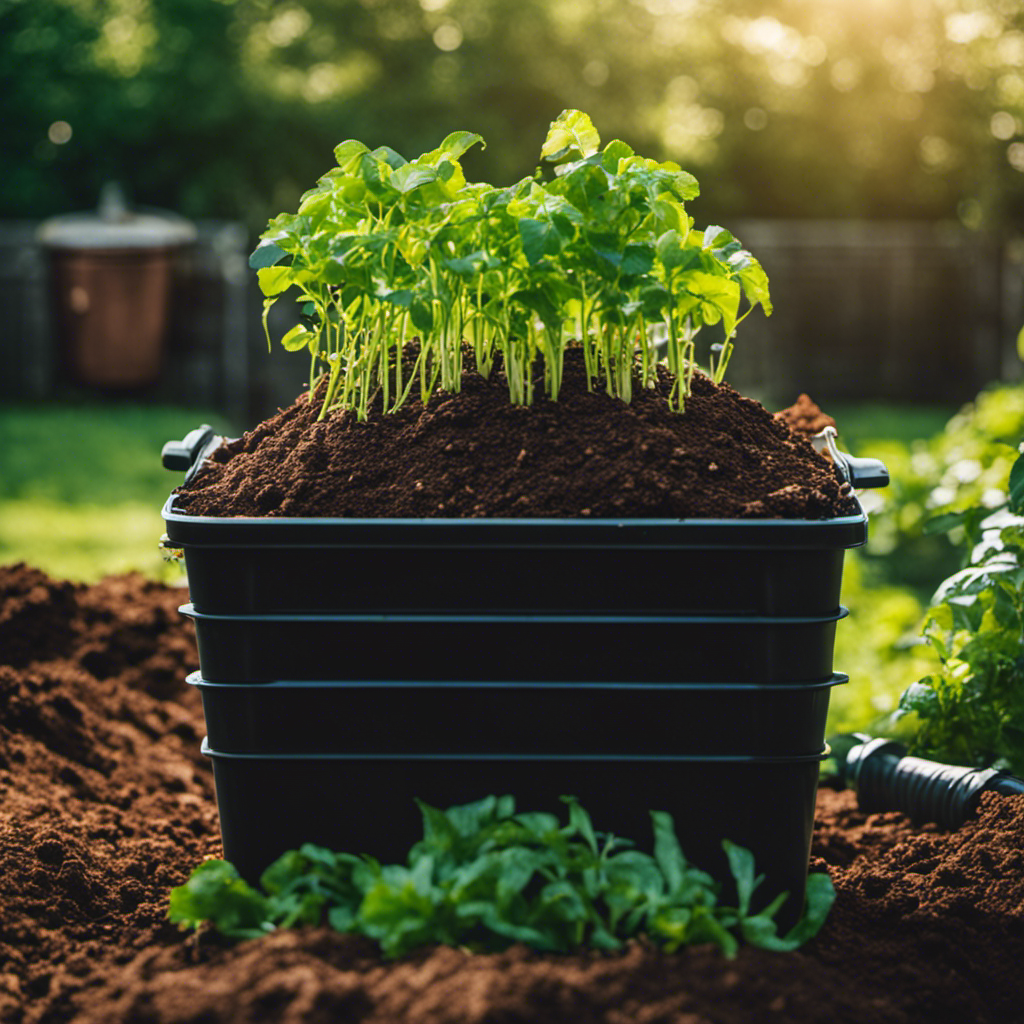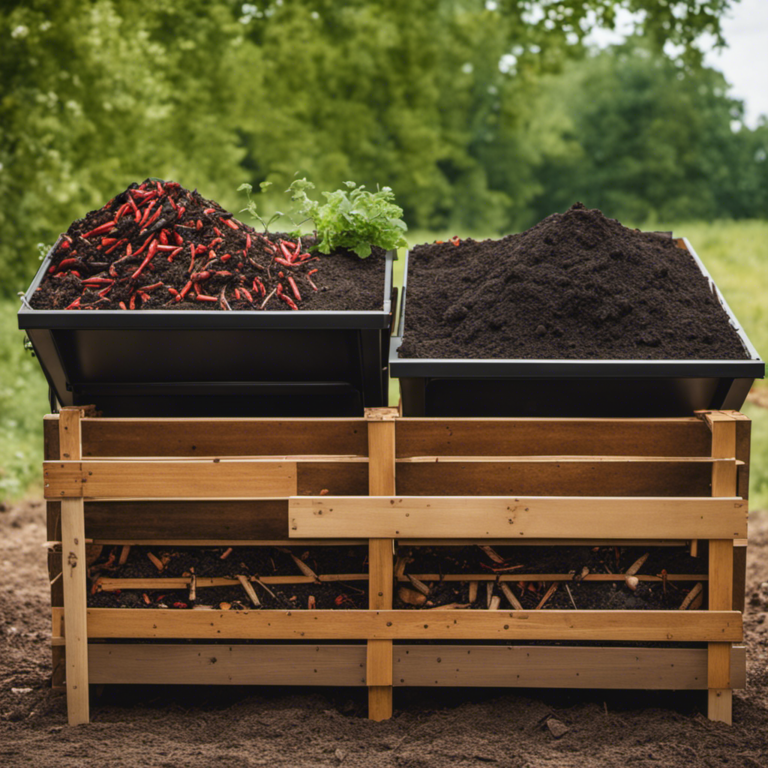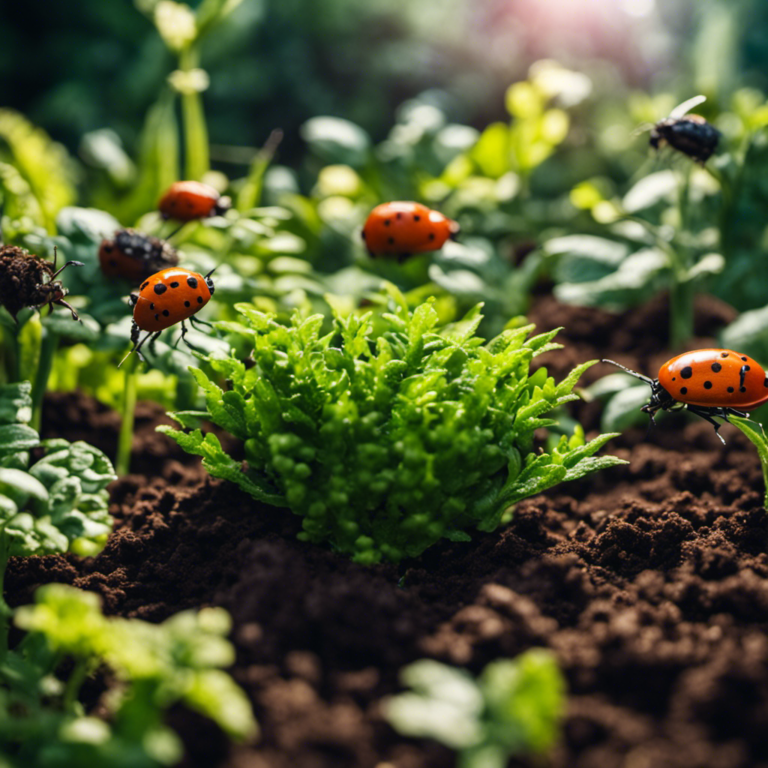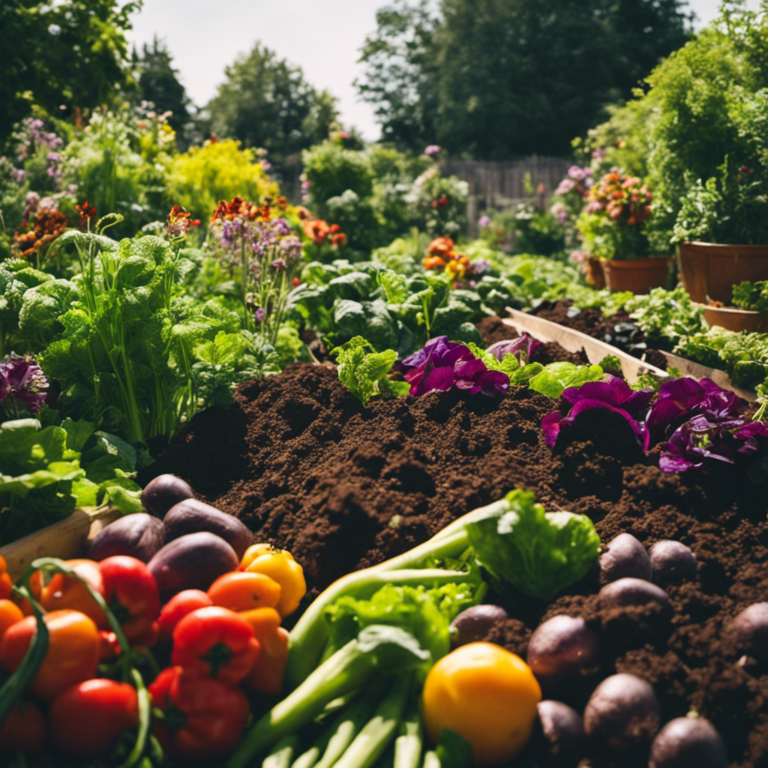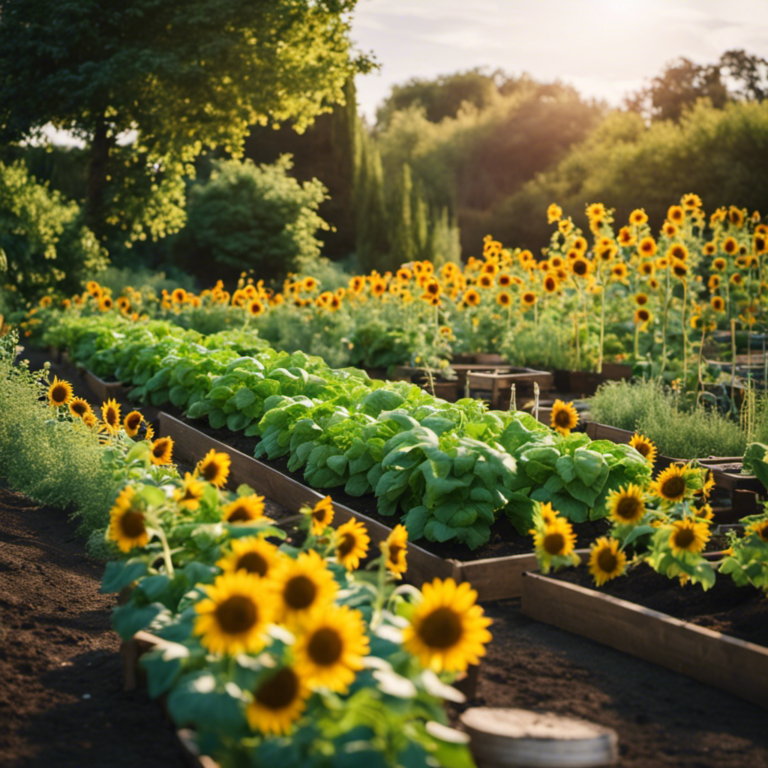As a passionate gardener, I’ve always found composting to be a fascinating process. It’s like nature’s own way of creating nutrient-rich soil.
In this article, I’ll share my knowledge and practical tips on home composting for your organic garden. From choosing the right composting method to using your finished compost, I’ll guide you through each step.
Prepare to discover the secrets of transforming kitchen scraps and yard waste into valuable nourishment for your plants.
Key Takeaways
Home composting is a straightforward and eco-friendly method to enhance your organic garden. By selecting the right composting technique, finding a suitable location, gathering and preparing compostable materials, maintaining balance, and harvesting your finished compost, you can create a valuable soil amendment for your plants.
It’s important to remember that composting allows you to transform kitchen scraps and yard waste into valuable resources for your garden. Start composting today and experience the numerous benefits it brings to your gardening endeavors.
Happy composting!
Selecting the Right Composting Method
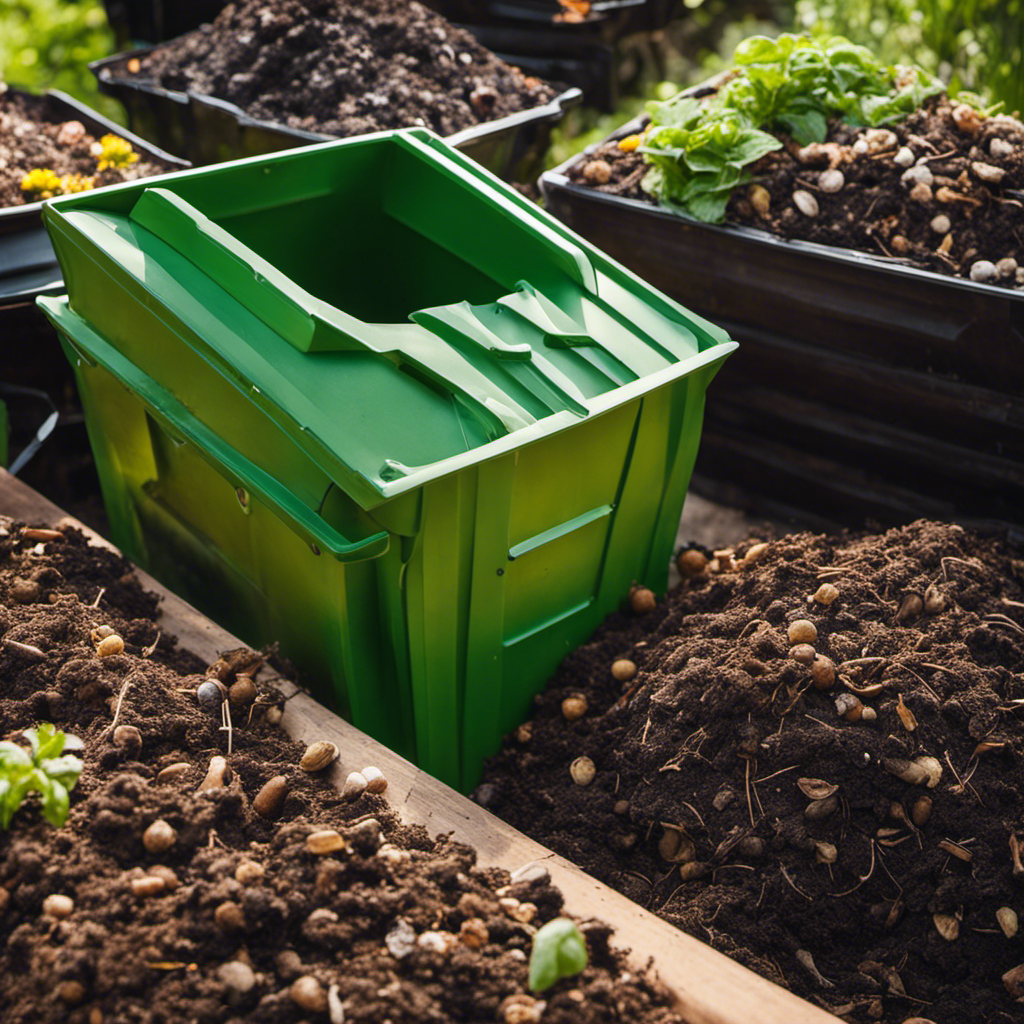
Selecting the Right Composting Method
I prefer using a compost tumbler for my organic garden because it allows for easy turning and faster decomposition of organic materials. When choosing a composting method, there are a few factors to consider. One important aspect is the type of composting process you want to engage in.
Two popular options are aerobic composting and vermicomposting.
Aerobic composting involves providing oxygen to the microorganisms that break down the organic matter. This method is perfect for those who want a faster decomposition process. By regularly turning the compost, you ensure that oxygen reaches all parts of the pile, promoting the growth of aerobic bacteria that thrive in the presence of air. The compost tumbler is an excellent choice for aerobic composting because it allows for easy turning, ensuring that the oxygen is distributed evenly throughout the pile.
On the other hand, vermicomposting involves using worms to break down the organic matter. Worms are voracious eaters and produce nutrient-rich castings, also known as worm compost. This method is great for those who want to recycle kitchen scraps and enjoy the benefits of worm castings in their garden. To start vermicomposting, you’ll need a worm bin, bedding material such as shredded newspaper, and a supply of red worms.
When selecting a composting method for your organic garden, consider the benefits of aerobic composting and vermicomposting. An efficient compost tumbler is an excellent choice for aerobic composting, while vermicomposting offers the advantage of utilizing worms to break down organic matter. Choose the method that suits your needs and preferences, and enjoy the benefits of nutrient-rich compost for your garden.
Choosing the Ideal Location for Your Compost Bin
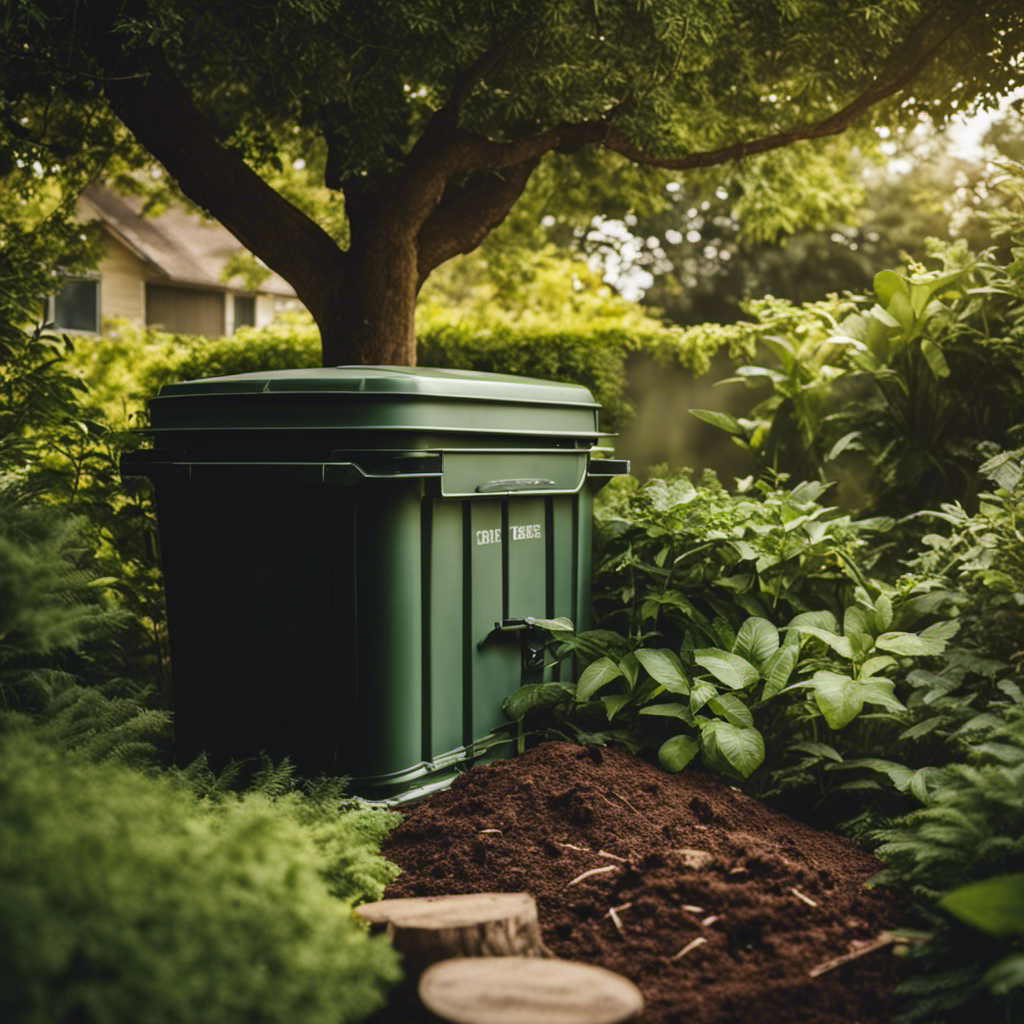
Choosing the Best Location for Your Compost Bin
When selecting the perfect spot for your compost bin, it’s crucial to consider factors like sunlight, convenience, and odor control. The placement of your composting bin plays a significant role in the success of your composting efforts and the overall health of your organic garden.
First, let’s talk about sunlight. It’s important to place your compost bin in an area that receives ample sunlight, ideally four to six hours a day. Sunlight provides warmth and energy to the microorganisms responsible for breaking down the organic materials, which helps speed up the decomposition process.
Next, let’s discuss convenience. It’s essential to choose a location that’s easily accessible for adding and turning the compost. Consider placing it close to your kitchen for convenient disposal of food scraps and near a water source for occasional moisture addition. This will make it easier for you to maintain your compost pile regularly.
Lastly, let’s address odor control. To minimize any potential odors, it’s best to place the compost bin away from living spaces and outdoor sitting areas. Additionally, ensure the area is well-ventilated to prevent the buildup of unpleasant smells.
Collecting and Preparing Compostable Materials

Collecting and Preparing Compostable Materials
To continue the discussion from the previous subtopic, an important step in home composting is collecting and preparing the necessary compostable materials. Properly managing the materials you put into your compost bin is crucial for successful composting. Here are some tips on collecting and preparing compostable materials:
Collecting Compostable Materials:
-
Kitchen Scraps:
-
Fruit and vegetable peels
-
Coffee grounds and filters
-
Tea bags
-
Eggshells
-
Yard Waste:
-
Leaves, grass clippings, and plant trimmings
-
Small branches and twigs (chopped or shredded)
-
Weeds without seeds or roots
Preparing Compostable Materials:
-
Size Matters:
-
Chop or shred larger materials into smaller pieces to speed up decomposition.
-
Layering:
-
Alternate layers of green (nitrogen-rich) and brown (carbon-rich) materials for optimal composting.
-
Moisture Control:
-
Keep the compost pile moist, but not soggy, by watering it regularly.
-
Aeration:
-
Turn the pile occasionally to provide oxygen and promote decomposition.
By following these composting techniques, you can avoid common composting mistakes such as adding meat, dairy, or oily food scraps, which can attract pests and slow down the composting process. Additionally, avoid adding weeds with seeds or invasive plant species to prevent them from spreading in your garden.
With proper collection and preparation of compostable materials, you can create nutrient-rich compost to enrich your organic garden and reduce waste.
Maintaining the Balance of Your Compost Pile

Maintaining the Balance of Your Compost Pile
To ensure proper decomposition of organic materials, it’s important to maintain a balance between nitrogen-rich and carbon-rich materials in your compost pile. Managing the moisture of your compost pile plays a crucial role in maintaining this balance. The ideal moisture content for a compost pile is around 50-60%. Moisture is essential for the decomposition process as it activates the microorganisms responsible for breaking down the organic matter.
To manage the moisture, it’s recommended to regularly check the moisture level by squeezing a handful of compost. The compost should feel like a damp sponge, with a few drops of water coming out when squeezed. If the pile is too dry, add water to increase the moisture. On the other hand, if the pile is too wet, add dry materials such as leaves or shredded paper to absorb the excess moisture.
Troubleshooting common composting problems can also help maintain the balance of your pile. If you notice a foul odor, it could be an indication of excessive moisture or insufficient air in the pile. Turning the pile to introduce oxygen and adding dry materials can alleviate this issue. If your compost isn’t decomposing, it may be lacking nitrogen. In this case, adding nitrogen-rich materials like grass clippings or kitchen scraps can boost the decomposition process.
By effectively managing compost moisture and addressing common composting problems, you can maintain the necessary balance for a healthy and productive compost pile.
Harvesting and Using Your Finished Compost
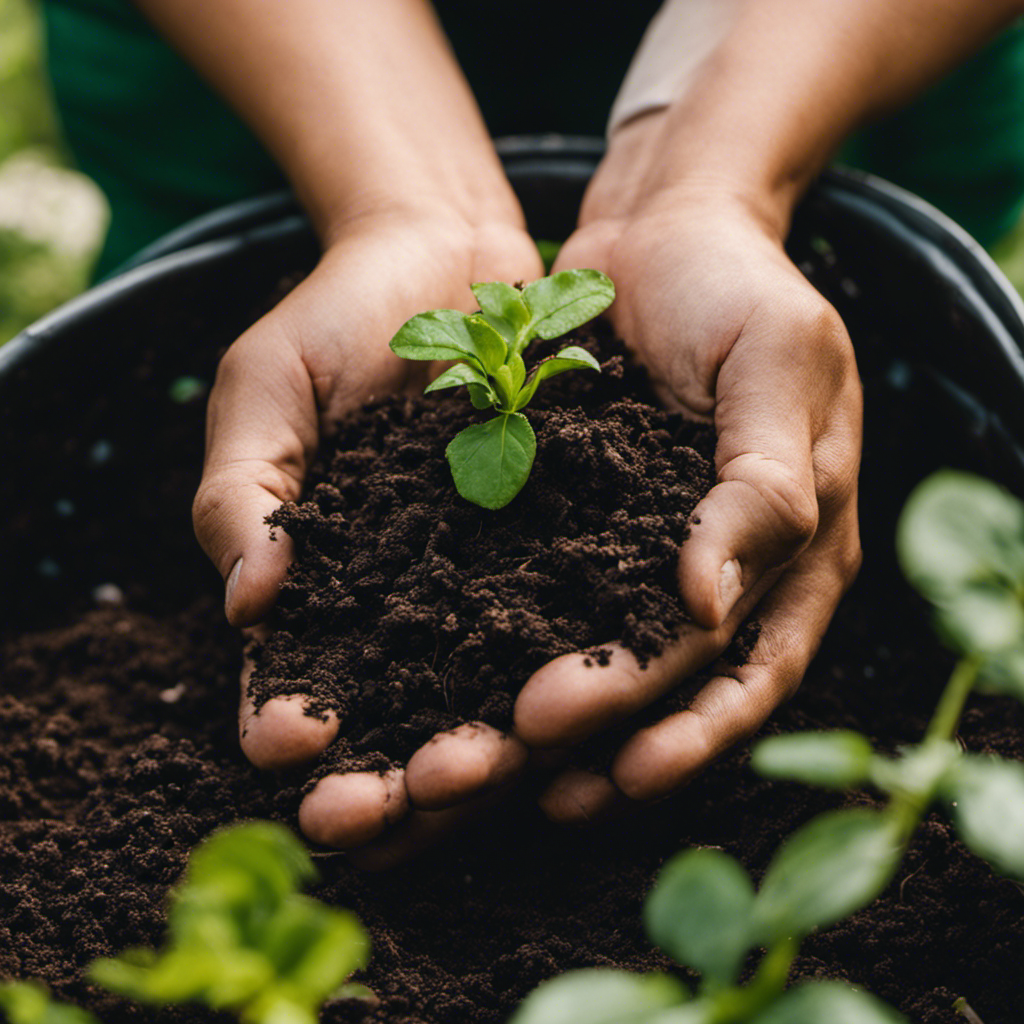
Harvesting and Using Your Finished Compost
Once you have successfully maintained the balance of your compost pile, the next step is to harvest and utilize your finished compost. Harvesting your compost is an exciting moment in the composting process because it means you now have a nutrient-rich soil amendment ready for your organic garden. Here are some practical tips for harvesting and using your finished compost:
Harvesting your compost:
- Use a garden fork or shovel to turn the pile and expose the finished compost at the bottom.
- Remove the finished compost and transfer it to a separate container or wheelbarrow.
Utilizing your finished compost:
- Mix the finished compost into your garden soil to improve its structure and fertility.
- Apply a layer of compost as a top dressing around your plants to provide a slow-release source of nutrients.
Another great way to maximize the benefits of your finished compost is by using compost tea. Compost tea is created by steeping finished compost in water, allowing beneficial microorganisms and nutrients to be extracted. To make compost tea, simply place a mesh bag filled with compost in a bucket of water and let it sit for a few days. Use this nutrient-rich liquid to water your plants or as a foliar spray.
Troubleshooting common composting problems is essential for maintaining a healthy compost pile. If you notice unpleasant odors, it may be a sign of anaerobic conditions or too much moisture. To fix this, turn the pile more frequently or add dry materials like leaves or straw. If your compost isn’t breaking down, it may lack nitrogen. Add green materials like grass clippings or kitchen scraps to provide the necessary nitrogen boost.
Conclusion
Home composting is a simple and sustainable way to enrich your organic garden. By choosing the right composting method, finding a suitable location, gathering and preparing compostable materials, maintaining balance, and harvesting your finished compost, you can create a valuable soil amendment for your plants.
Remember, with composting, you can transform kitchen scraps and yard waste into valuable resources for your garden. Start composting today and see the benefits for yourself.
Happy composting!
